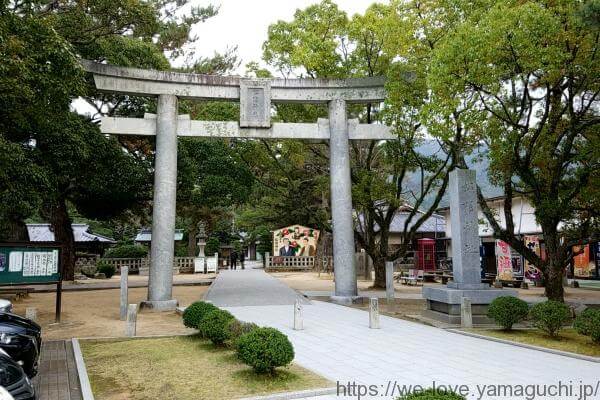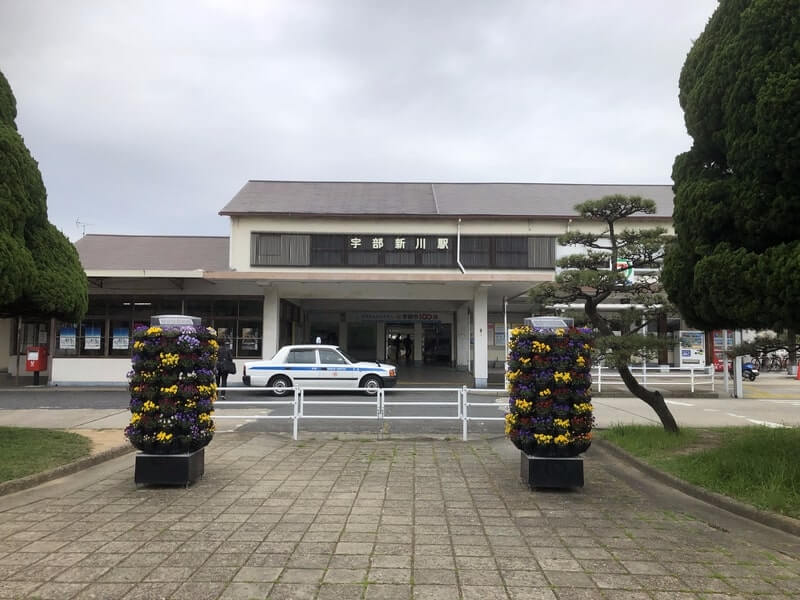明治維新胎動の地、萩。 松陰神社を訪れて志士たちの「志」にふれてみませんか。

Hagi City, located in northern Yamaguchi Prefecture along the Sea of Japan, is widely known as the birthplace of the Meiji Restoration. It was here that visionaries such as Yoshida Shoin, a pioneering figure of the era, and numerous other reformists were born, earning Hagi the reputation as a cradle of revolution.
Thanks to this rich historical backdrop, Hagi boasts a wealth of historically significant sites.
Among them, one of the most popular destinations is Shoin Shrine, which we’ll introduce in this article.
Why not visit Hagi and immerse yourself in the spirit of the reformists who shaped Japan’s history?
この記事の目次
Who Was Yoshida Shoin?
In 2015, Yoshida Shoin gained renewed attention through the NHK historical drama “Hana Moyu”.
Shoin Shrine is a significant site deeply connected to the life and legacy of Yoshida Shoin.

Yoshida Shoin was born as the second son of Sugi Yurinosuke, a samurai of the Hagi Domain. At the age of five, he became the foster child of Yoshida Daisuke, his father’s younger brother and an instructor of Yamaga-style military studies.
At just six years old, Shoin inherited the Yoshida family estate, and his remarkable talent was quickly recognized. By the age of nine, he was appointed as a military studies instructor at the Hagi Domain’s school, Meirinkan.
When he was 13, Shoin’s uncle, Tamaki Bunnoshin, established the Shoka Sonjuku, a private school at his home. Shoin dedicated himself further to his studies and became an independent military studies instructor at Meirinkan by the age of 19.
Shoin later traveled extensively to expand his knowledge. After studying in Kyushu to acquire Western knowledge, he continued his educational journey across the Kanto, Tohoku, and Kansai regions.
At the age of 25, Shoin attempted to stow away on an American ship in Shimoda, Izu, violating national law in the process. His plan to travel abroad failed, and he was imprisoned in the Noyama Prison in Hagi.
Afterward, Shoin was placed under house arrest at his family home, the Sugi residence. During this time, he began giving lectures on Mencius, and his teachings gained widespread acclaim. This led to him taking the de facto leadership of the Shoka Sonjuku.
Shoin’s approach to education emphasized identifying and fostering individual strengths while encouraging open and vigorous debates. His teaching methods produced many talented individuals who would later play significant roles during the late Edo period and the Meiji Restoration.
Yoshida Shoin was executed at the young age of 30 during the Ansei Purge, ordered by Ii Naosuke.
Age at Death: 30 years (29 full years of life)
Date of Birth: August 4, 1830 (Bunsei 13)
Date of Death: October 27, 1859 (Ansei 6)
Before his death, Yoshida Shoin left these profound words for future generations:
“Gentlemen, Go Mad.”
This phrase embodies Yoshida Shoin’s relentless spirit—one driven by an overflowing passion that constantly broke through the boundaries of conventional wisdom. It’s a statement that truly reflects his character.
In Hagi City, Yoshida Shoin is not only deeply respected but also affectionately referred to as “Shoin Sensei” (Teacher Shoin) by many locals.
If you ever have the chance to discuss Yoshida Shoin while visiting Hagi, don’t hesitate to call him Shoin Sensei—it’s sure to leave a warm impression!
What is Shoin Shrine?

Shoin Shrine is dedicated to Yoshida Shoin as its enshrined deity. Located in Hagi City, it is revered as a shrine of academic excellence and attracts many visitors during the New Year for hatsumode (first shrine visit of the year).
Within the shrine grounds, you’ll find significant historical sites such as the Shoka Sonjuku (Shoin’s private school) and the Old Residence of Yoshida Shoin, where he was confined.
The origins of Shoin Shrine date back to 1890 (Meiji 23), 31 years after Yoshida Shoin’s death. Shoin’s older brother, Sugi Tamiji, built a small earthen shrine within the Sugi family estate. The shrine housed Shoin’s personal belongings, including his Akamagata inkstone and letters he had written to his family, which were enshrined as sacred objects.
Later, in 1907 (Meiji 40), an initiative led by Shoin’s disciples from Shoka Sonjuku, including Ito Hirobumi and Nomura Yasushi, sought to establish the shrine as a public institution. Their efforts culminated in the official recognition of Shoin Shrine as a prefectural shrine.

The present shrine building was newly constructed in 1955 (Showa 30).
One unique feature of Shoin Shrine is its omikuji (fortune slips), which include teachings from Shoin Sensei.
Be sure to give them a try when you visit!

The original earthen shrine from Shoin Shrine’s early days now serves as a sub-shrine called Shomon Shrine, dedicated to Shoin’s disciples, including Takasugi Shinsaku and Kusaka Genzui, who studied at Shoka Sonjuku. This sub-shrine was established in 1956 (Showa 31).
Did you know there are Shoin Shrines outside of Hagi as well?
In addition to the Hagi shrine, there is another in Setagaya Ward, Tokyo, near Yoshida Shoin’s grave. If you have the chance to visit Tokyo, be sure to stop by and pay your respects.
Within the grounds of Hagi’s Shoin Shrine, you’ll also find numerous historical landmarks and a memorial museum connected to Yoshida Shoin.
Next, let’s take a brief look at these fascinating sites!
What is Shoka Sonjuku?

Shoka Sonjuku was a private school led by Yoshida Shoin during the late Edo period.
It originally began as a private academy established by Shoin’s uncle, Tamaki Bunnoshin, at his residence. In 1857 (Ansei 4), 28-year-old Shoin took over and became its principal instructor.
The school was notable for accepting students regardless of their social status or rank, providing education in a wide range of disciplines such as Confucianism, military strategy, and history.

It is said that Yoshida Shoin only taught at Shoka Sonjuku for a little over a year.
Despite this short period, Shoin revolutionized education by avoiding the traditional one-sided teacher-to-student approach. Instead, he encouraged active debates where opinions were freely exchanged. He also incorporated activities such as mountaineering, swimming, and farming into his curriculum, focusing on both physical and mental development. This practical and holistic approach to education, referred to as “living studies,” nurtured many influential figures who later played pivotal roles during the late Edo and Meiji periods, including Kusaka Genzui, Takasugi Shinsaku, and Ito Hirobumi.
Due to his remarkable ability to foster talent in such a short time, Yoshida Shoin is often regarded as a “genius in nurturing people.” His educational methods and philosophies are still widely respected today and have been adopted into various training programs, including corporate workshops.
However, even a master educator like Yoshida Shoin was unable to cultivate growth in three particular students. What these three individuals lacked was a “heart that feels inspired.”
Shoin believed that even the most exceptional teaching cannot foster growth if the learner lacks the capacity to feel and be moved. Reflecting on this, I am reminded of the importance of cherishing a heart open to inspiration.
Lastly, did you know that Yoshida Shoin is said to be the first person to use the words “boku” (I) and “kimi” (you) in everyday language? These terms, which are now common in Japanese, originally conveyed the idea of equality and camaraderie. This small linguistic detail reveals much about Shoin’s character and his respect for others as equals and allies.
What is the Old Residence of Yoshida Shoin’s Confinement?

This is the House Where Yoshida Shoin Was Born.
In 1854 (Ansei 1), after his failed attempt to stow away on a ship in Shimoda, Izu, Shoin was captured and imprisoned in Edo’s Tenmacho Jail before being transferred to the Noyama Prison in Hagi.
The following year, he was released but placed under the custody of his father, Sugi Yurinosuke, and confined to a room in his family home, the Sugi residence. There, Shoin led a life of introspection, devoting himself to reading and writing during his period of house arrest.

Encouraged by his family, Yoshida Shoin began lecturing young people on works such as Mencius during his house arrest. This eventually developed into his teachings for the disciples of Shoka Sonjuku.
Note: “Yuushu” refers to being imprisoned or confined.
The Yoshida Shoin Historical Museum

The Yoshida Shoin Historical Museum recreates and explains his life through life-sized wax figures in 20 dramatic scenes, accompanied by an audio guide.
Hours of Operation: 9:00 AM – 5:00 PM
Admission Fees:
Adults/University Students: 500 yen
High School/Middle School Students: 250 yen
Elementary School Students: 100 yen
Closed: Open year-round (no holidays)
Monument: “The Birthplace of the Meiji Restoration”

In front of the Historical Museum stands a stone monument boldly inscribed with the words “The Birthplace of the Meiji Restoration.”
This monument was erected in 1968 (Showa 43) to commemorate the 100th anniversary of the Meiji Restoration. The calligraphy was done by the late Prime Minister Eisaku Sato, a native of Yamaguchi Prefecture.
Shoin Shrine Treasure Hall: Shiseikan

The Shiseikan Treasure Hall was opened in 2009 (Heisei 21) to mark the 150th anniversary of Yoshida Shoin’s passing.
It showcases the Rukonroku, Yoshida Shoin’s handwritten farewell letter to his disciples written just before his execution, as well as a wealth of his personal belongings, letters, and other artifacts.
The hall also hosts special exhibitions and events.
Note: The Rukonroku is a letter written by Yoshida Shoin to his disciples shortly before his death.

Hours of Operation: 9:00 AM – 5:00 PM (Last admission at 4:30 PM)
Closed: Open year-round (no holidays)
Note: Hours and schedules are subject to change without notice.
Kagetsurou(花月楼)

In 1959 (Showa 34), the teahouse from the separate residence of the 7th Hagi Domain lord, Mori Shigetoki, was relocated here.
In addition, there are dining options available at the site.
《Shoin Dining Hall》

Hours of Operation: 10:00 AM – 5:00 PM
Closed: Open year-round (no holidays)
Note: Hours and schedules are subject to change without notice.
In closing
What Did You Think?
For enthusiasts of the late Edo period, Shoin Shrine in Hagi is an unmissable destination.
As its name suggests, the shrine is deeply connected to Yoshida Shoin, offering visitors a glimpse into his tumultuous and impactful life.
In addition, in July 2015, Shoka Sonjuku and Yoshida Shoin’s Old Residence of Confinement were registered as part of the “Sites of Japan’s Meiji Industrial Revolution” on the UNESCO World Heritage List.
This recognition highlights how Shoin’s teachings were carried forward and significantly contributed to Japan’s industrial revolution.
As we approach the 150th anniversary of the Meiji Restoration, there’s no better time to visit Shoin Shrine and immerse yourself in the passion and aspirations of Yoshida Shoin and the many visionary reformists of his time.
・Name: Shoin Shrine
・Address: 1537 Tsubaki Higashi, Hagi City, Yamaguchi Prefecture
・Access:
・By Car: About 30 minutes from Edo on the Hagi-Ogori Road
・By Train: About a 10-minute walk from JR San’in Main Line Higashi-Hagi Station
・Hours of Operation: Free access to the shrine grounds
・Closed: Open year-round (no holidays)
・Phone Number: +81-838-22-4643 (Shoin Shrine Office)
・Admission Fee: 500 yen (per adult for entry to Shiseikan)
・Estimated Visit Time: 60–90 minutes
・Recommended Visiting Season: All year
・Official Website: http://shoin-jinja.jp/


